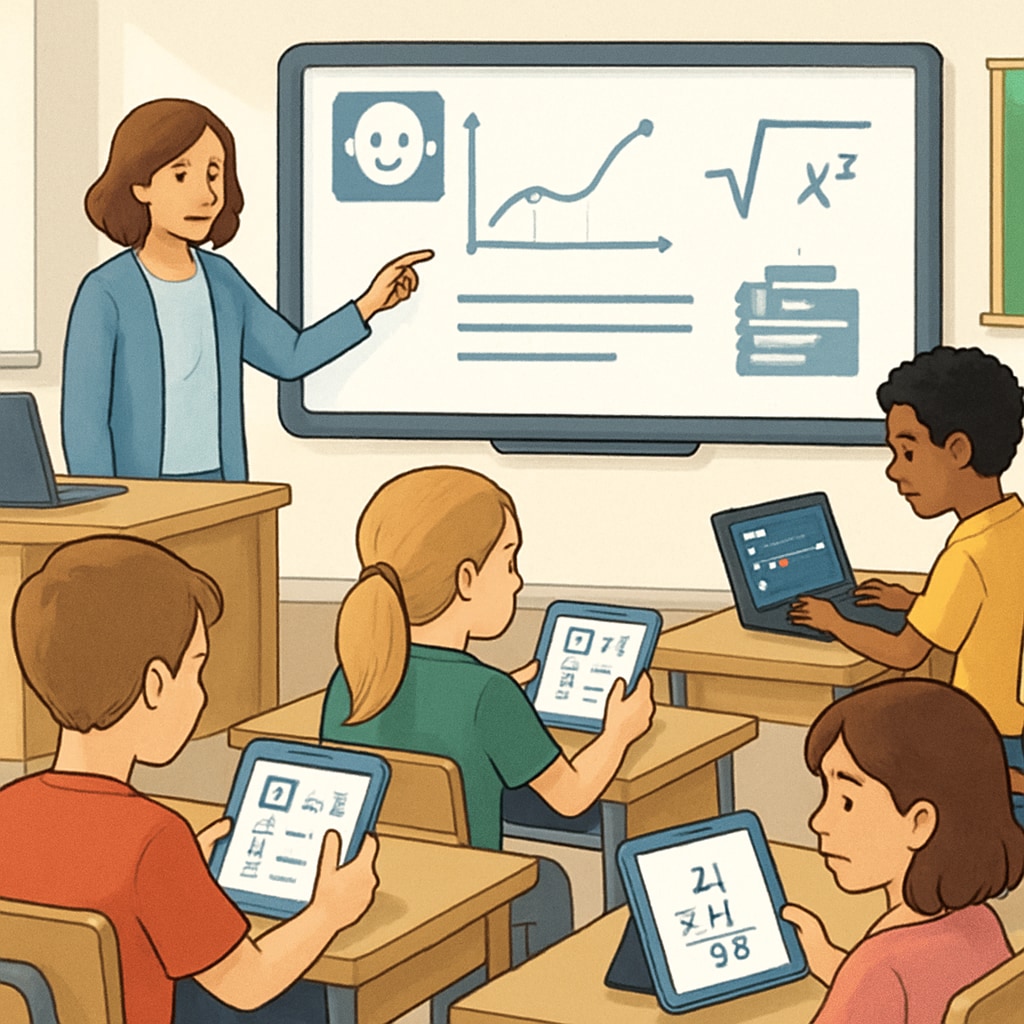Artificial intelligence, school education, and future impact are becoming inseparable as technology rapidly integrates into K12 classrooms. Over the next 5–10 years, AI has the potential to revolutionize traditional education models through personalized learning, redefined teacher roles, and innovative assessment systems. This article dives into the opportunities and challenges that AI presents to the education sector, encouraging educators to embrace this transformative wave.
Personalized Learning: Tailoring Education to Every Student
One of the most promising applications of AI in K12 education is its ability to deliver personalized learning experiences. Unlike traditional one-size-fits-all teaching methods, AI-powered systems can analyze individual learning styles, strengths, and weaknesses to create customized lesson plans. For instance, platforms like Khan Academy already use AI to adapt content based on student progress.
AI can also provide real-time feedback, helping students address their mistakes immediately. This level of personalization ensures that no student is left behind, fostering a more inclusive and effective learning environment. As a result, educators can better support diverse student needs, whether they are advanced learners or require additional assistance.

Transforming Teacher Roles in AI-Powered Classrooms
While AI enhances student learning, it also transforms the role of teachers. Far from replacing educators, AI serves as a powerful assistant, alleviating administrative burdens and allowing teachers to focus on fostering creativity, critical thinking, and interpersonal skills.
For example, AI can automate tasks such as grading assignments and tracking student progress, freeing up valuable time for teachers to engage with students. Moreover, AI tools can help identify at-risk students early, enabling timely interventions. Teachers, in turn, can use this data-driven insight to personalize their teaching approaches further. According to a report from Brookings Institution, this symbiotic relationship between teachers and AI can lead to more dynamic and impactful learning environments.

Revolutionizing Assessment Systems
Traditional assessment systems often rely on standardized tests, which fail to capture the full spectrum of a student’s abilities. AI promises to revolutionize this by enabling more comprehensive and continuous evaluation methods. For example, AI can monitor student engagement during lessons, assess problem-solving processes, and even analyze written assignments for creativity and critical thinking.
Additionally, AI-driven assessments can identify patterns and trends that might go unnoticed in conventional evaluations. This data-driven approach can provide a more holistic understanding of student performance, paving the way for more effective teaching strategies and improved educational outcomes.
Challenges and Ethical Considerations
Despite its potential, integrating AI into K12 education is not without challenges. Concerns about data privacy, algorithmic bias, and the digital divide must be addressed to ensure equitable access to AI-driven tools. For instance, schools in underprivileged areas may lack the infrastructure needed to implement AI solutions effectively.
Moreover, ethical considerations surrounding the use of student data must be prioritized. Policymakers, educators, and technology developers must collaborate to establish clear guidelines that protect student privacy while enabling the benefits of AI in education.
Preparing for the Future
To fully embrace the potential of AI, educators must be proactive in adapting to this technological shift. Professional development programs can help teachers understand and integrate AI tools into their classrooms effectively. Additionally, schools must invest in the necessary infrastructure and resources to ensure that AI benefits all students, regardless of their socioeconomic background.
As AI continues to evolve, its role in education will undoubtedly expand. By addressing challenges and leveraging opportunities, we can create a future where every student has access to a high-quality, personalized education.
Readability guidance: This article uses short paragraphs and clear headings for easy navigation. Lists and examples are incorporated to summarize key points. Active voice and transition words ensure a smooth reading experience.


